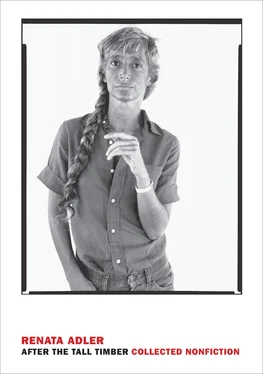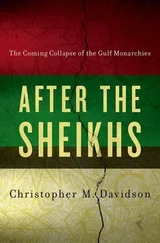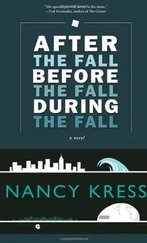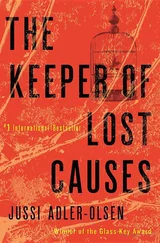To go back, however, to the career trajectory of John J. Sirica as he tells it. In 1926, on his third try, Sirica did manage to complete and graduate from law school. By this time, “I was tempted by the idea of becoming a professional boxer,” he writes, “since I felt more confident of my ability as a fighter than as a lawyer.”
On the morning the bar exam was to be given I had breakfast with Morris Cafritz. I had pretty well decided to skip the bar exam and head for Florida to see my father and mother….
[Morris] knew that I was thinking about becoming a professional boxer. “Don’t be foolish,” he told me. “Even if you’re not prepared, take the exam.”
He has already described Mr. Cafritz as a “man who advised and encouraged me a great deal,” while he was struggling through law school, and as “at the time becoming one of the most prominent and successful real-estate developers in Washington.” It is true that Morris Cafritz went on to become immensely successful in real estate in Washington — and a highly respected citizen and generous benefactor of charities of every kind. At the time he was advising, encouraging, and having breakfast with Sirica, however, he was already very wealthy. Again, one wonders, what can have been the basis of this friendship between the poor and unpromising young law student and this highly influential figure. What Sirica does not mention is that Cafritz, too, at the time he “took a liking” to young Sirica, had an establishment involved with liquor and, like Sirica’s father’s, bowling. In his early twenties (according to Leslie Milk, in an article in the Washington Magazine of October 1996), Cafritz had borrowed $1,400 from his father and, a few years later, “bought a saloon.”
But not just any saloon: Cafritz’ was across from the Washington Navy Yard…. Saloonkeeping was a rough business…. Cafritz was his own bouncer. He slept over the bar and kept a gun under his pillow to protect the profits. Cafritz soon moved from barkeeping into a safer game. By 1915, he was known as the bowling king of Washington.
All of this is a bit more raffish, and in some ways more appealing, than what Sirica describes. In the event, after his breakfast with Cafritz, Sirica, who has not even taken the bar review course, does take the bar exam, and goes on to visit his parents in Miami. While he is down there, he finds out, by telegram and to his surprise, that he has passed. He is unable to find work as a lawyer in Miami. He goes back to Washington, finds no legal work, goes back to his family in Miami. To earlier questions about his story is added another: Where, failing as he constantly does to find a job, does he get the money to keep traveling back and forth to Miami? And what was his family doing there?
One source of income, for Sirica, has always been, although he never quite acknowledges it, professional boxing. In Washington, as early as 1921, we know, he has been boxing “almost every day” with local professionals, and “at local clubs in exhibition bouts with the professionals.” In 1926, in Miami, after “a local promoter needed someone to box in a semi-windup at Douglas Stadium,” Sirica prepares for the fight not just by weeks of sparring but by “running every day at a golf course in Miami Beach”—under whose sponsorship he does not say. Perhaps, in those days, Miami Beach had a public golf course. Sirica’s opponent, at Douglas Stadium, is “a six-foot-tall welterweight who was known for having fought one of the roughest bouts ever staged in Miami.” (“Back in Washington, I had fought about thirty exhibitions … but nothing I ever did worried me as much as that oncoming fight.”) Sirica beats him.
The write-ups in the newspapers the next day were all good, even though they didn’t spell my name correctly. I was on my way as a professional boxer.
His mother, he says, “heard about the fight,” and objected. He had, of course, as he has already told us (and as his mother must have known), been fighting professionally for years. He would also organize and promote professional boxing matches. What he does not mention, does not perhaps remember or think important, is that professional boxing in this country was at the time, and had been since at least 1903, controlled by organized crime.
That professional boxers, and particularly organizers and promoters of professional boxing, had such ties was established, for example, in the Kefauver Hearings (U.S. Senate Special Committee to Investigate Organized Crime, May 1950 through August 1951). As the syndicated sportswriter Bob Kravitz recently put it:
In the mid-fifties, a politician named Estes Kefauver chaired hearings on the sad state of the game, hoping to reform the sport and get it out of the hands of the Mob. When it was over, he realized the corruption was too deeply imbedded, too systemic.
The only way to get rid of corruption in boxing is to get rid of boxing. At a meeting of Mob bosses and boxing managers in 1957, Mafia operative Binky Palermo worried about his boys losing their grip on it. Palermo had nothing to worry about.
As for the boxers themselves, in Washington, D.C., as it happens, all professional boxing was illegal — not just in 1921 when Sirica began but throughout the years he was boxing there — until 1934, when Congress finally legalized it in the District. Professional boxing in Washington, in other words, was a violation of the criminal statute. That Sirica knew this is beyond doubt. All the years he boxed professionally in the District before 1934 (including the years 1930 to 1934, when he was actually an assistant in the U.S. Attorney’s office), he used, although he does not mention this either, fictitious names. It is, of course, possible to be a criminal without ties to organized crime — a pickpocket, say, or a burglar. Illegal boxing, however, requires payoffs, for the arena, the police, the referee, the promoters, and so on. You simply cannot do it freelance or on your own. It requires a syndicate — notoriously hostile to encroachments on its turf. So that’s two sets of “clear ties to organized crime”: through professional boxing — as an organizer, boxer, and promoter in various cities at a time when mob control of the sport was essentially complete — and for more than thirteen years in the District, boxing professionally when it was still illegal there.
Is that all? Well, no, it isn’t. But it is all I said. It was not I, but the Times and its acolytes, who made a sensation of this. I wrote a little sentence, in a specific context, which is all I meant to write. The documentation for it is ample. Ms. Barringer, her “sources,” and her colleagues could have found it, if her agenda had really been journalism: the gathering, that is, and publishing of firsthand information. Judge Sirica, as Ms. Barringer and the Times kept pointing out, is dead. But if he were alive and he sued for libel, as the Times in all its pieces seemed to suggest he might have done — imagine the preposterousness of a federal judge, even Judge Sirica, suing for libel — he would lose.
And that is not all. To resume his own story, in 1926, after being turned down by law firms everywhere, he does get a job as a “sort of messenger” at a criminal law office on Fifth Street. “It wasn’t much, there was no regular pay, but it was a start.” Meanwhile, he has made another early, implausible, and apparently lifelong friendship with a rich and powerful man, Morris Kronheim, a wonderfully interesting figure — and later, like Cafritz, an extraordinary citizen and a generous benefactor of every sort. Kronheim became, through several administrations, one of the most influential and beloved figures in Washington. In 1903, at the age of fifteen, Kronheim, whose father owned a tavern, started his own liquor store. By 1985, he had the largest wholesale liquor distributorship in Washington and one of the largest in the country.
Читать дальше






![Джеффри Арчер - The Short, the Long and the Tall [С иллюстрациями]](/books/388600/dzheffri-archer-the-short-the-long-and-the-tall-s-thumb.webp)





